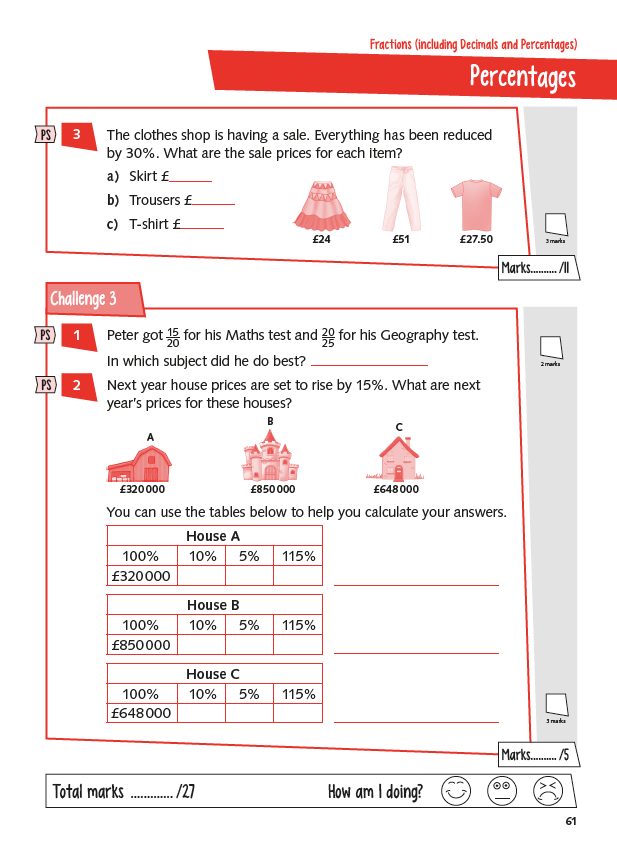To help prepare pupils for SATs, we can build their confidence by revising topics and making sure they know what to expect. Here are some ways to make sure pupils are familiar with the style of the SATs papers and questions.
General principles
- Always start any SATs practice work with warm-up or accessible questions that pupils should be able to answer easily. When pupils can successfully answer a question, this builds their confidence so they are more likely to ‘have a go’ at a more challenging question. Success leads to confidence leads to more success:

- Give pupils questions that look like SATs questions – either from past SATs papers or from a SATs practice book, such as Collins SATs Question Books. This helps pupils get used to the way a question gives them information and then shows the ‘question’ they need to answer in a tint box, the space they are given to do any working, the boxes to write answers in, and the marks allocated to each question. Explain all these features as pupils meet them.
- For any SATs practice, provide all the equipment pupils will have in the test:a pencil or blue/black pen
- a sharp, black pencil for mathematical drawing
- a ruler (showing centimetres and millimetres)
- an angle measurer or protractor (for Reasoning paper questions)
- a mirror
- a rubber (optional). If rubbers are not provided tell pupils that they should cross out any answers they wish to change.
Allow pupils to select the equipment they need for each question. Explain that they can use pen or pencil to work out their answers but they should use pencil for any drawings, and a ruler for drawing straight lines.
Practising arithmetic questions
First give pupils a set of questions under headings ‘addition’, ‘subtraction’ ‘multiplication’ ‘division’, to practise these skills one at a time. Then give very similar questions but without the headings, and in a random order.
Here are some examples from Collins KS2 Maths Arithmetic SATs Question Book:
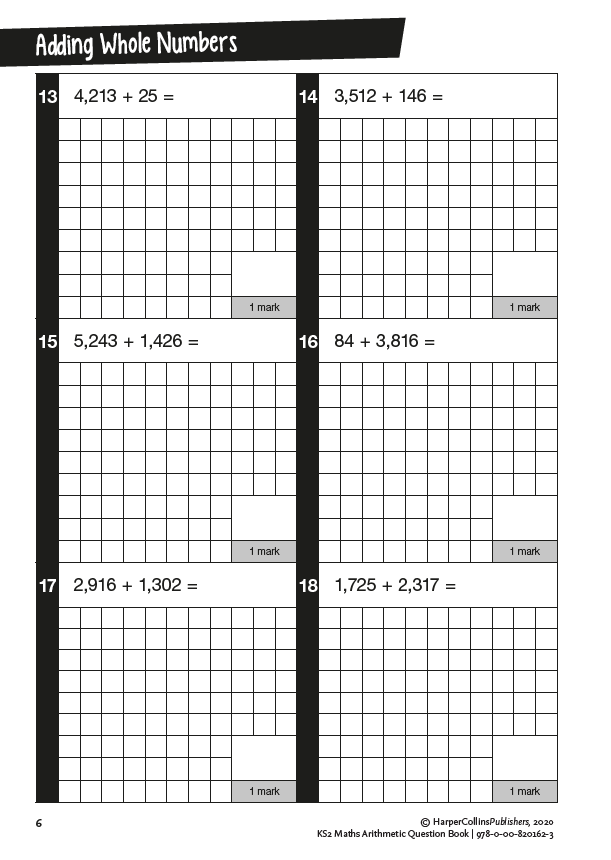
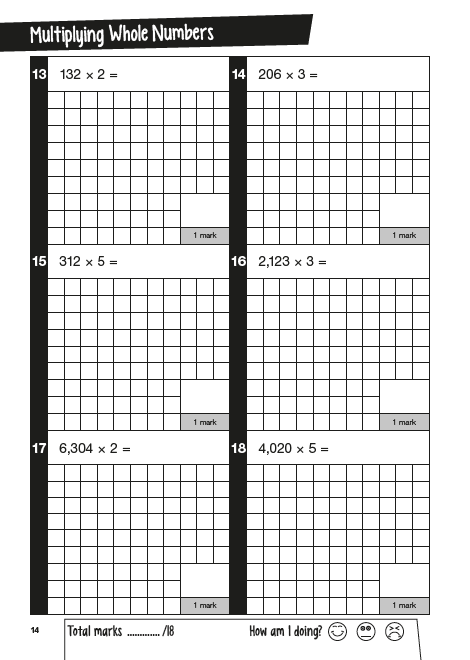
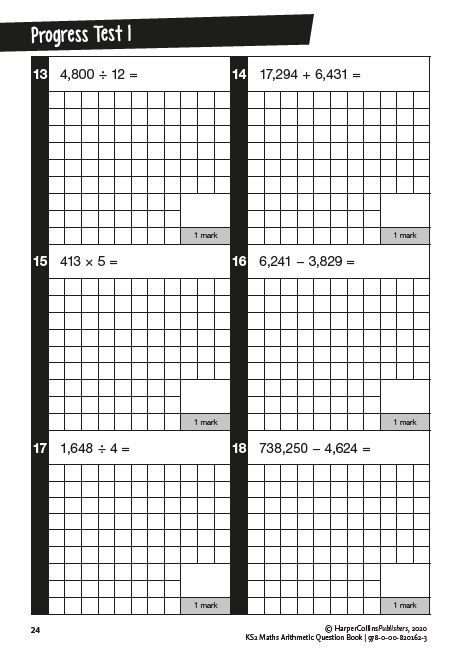
Discuss with children whether they found the ‘mixed’ questions harder and why. Emphasise the importance of looking carefully at signs (+, -, ×, ÷) in the question. Point out that you can answer the questions in any order you like. Often the first one is easier, but if you don’t think so, start with another one and come back to the first one later.
Building up the challenge
Start with skills practice, then tackle problem-solving questions that use these skills. These examples from Collins Year 6 Maths SATs Targeted Practice Workbook start with percentage calculations in Challenge 1, and progress to using ‘harder’ numbers and percentages in different contexts in Challenges 2 and 3.
Familiarising with SATs question types
- Work on small sets of questions that have the same command term, such as Write, Order, Match, Draw, Calculate,… to ensure pupils understand what the command term is telling them to do.
- Work on small sets of SATs questions that have the same response strategy, to give pupils plenty of practice with each:
- Tick the statements (may be more than one)
- Complete a grid/table/Venn diagram
- Writing answer in a box (doing working out elsewhere, doesn’t have to be fitted into the box)
- Matching answers with straight lines
- Circle the answer
- Some questions have ‘Show your method’ boxes with a squared paper background.
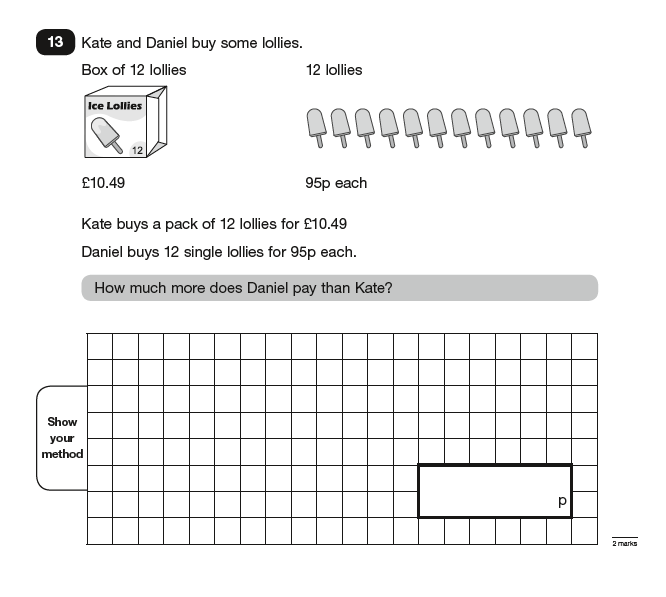
‘Show your method’ means showing someone else how you worked out the answer. Pupils can swap their answers to this type of question. Can they follow another pupil’s working? What would make it easier to follow? - Ensure pupils follow any instructions given in the question, for example ‘Use a ruler’ or ‘Write one symbol in each box’.
- Practice answering ‘Explain how you know…’ questions. Use ‘think, pair, share’ with a partner to work out an explanation orally, then write it down (including calculations where appropriate). You could prompt them by giving a sentence starter for their answer.
Familiarising with SATs papers
Start with small groups of carefully selected questions, gradually building up to longer sets, and then a practice paper.
- Start with, say, 5 questions, picked from across a SATs paper (eg questions 2, 6, 14, 19, 22), making sure you start with an ‘easy’ question. Remind pupils to leave any ‘tricky’ questions and come back to it later. Hold a poll on which questions are easier/harder – this will probably show that different people find different questions easy or difficult, so there is no ‘right’ order to tackle them.
- Gradually increase the number of questions in a practice set.
- When you first set a whole SATs paper, rather than telling pupils they have to do it all in one go, set a ‘Practice paper challenge’. How many questions can you answer in this paper? Can you answer more in the next one? In this way pupils are competing against themselves, to better their own score, rather than with each other.
Katherine Pate is a mathematics education consultant and author.


